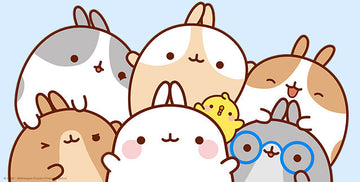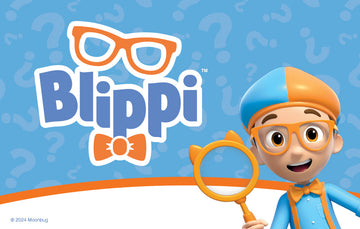Staying hydrated is crucial for toddlers, but getting them to drink enough fluids can be a challenge. As a parent, I know firsthand how concerning it can be when your little one refuses to drink. In this article, I'll share effective strategies to help hydrate a toddler who's being stubborn about sipping liquids. Let's dive in and tackle this common parenting dilemma together.
Understanding Toddler Hydration Needs
As a parent, I know how crucial it is to understand toddler hydration needs. Toddlers have unique requirements when it comes to staying hydrated. Their small bodies need a sufficient intake of fluids to maintain proper function and overall health.
When a toddler refuses to drink liquids, it can be a challenging situation for any parent. Encouraging hydration in toddlers who resist can be tricky. However, it's essential to find effective strategies to ensure they are getting an adequate amount of fluids throughout the day.
One way to tackle this issue is by offering a variety of fluids in different forms. Sometimes, toddlers may prefer water with a splash of fruit juice or flavored water over plain water. Experimenting with different options can help find what appeals to your toddler's taste buds.
Another approach is to use fun cups or straws to make drinking more enjoyable for toddlers. Sometimes, the novelty of a new cup or straw can pique their interest and encourage them to drink more fluids.
Additionally, incorporating hydrating foods such as fruits and vegetables into their diet can also contribute to their overall fluid intake. Foods like watermelon, strawberries, cucumbers, and oranges are not only nutritious but also help keep your toddler hydrated.
Being mindful of your toddler's hydration needs and finding creative ways to encourage fluid intake is key to ensuring they stay well-hydrated and healthy.
Sandilake Clothing Promotion
If you're looking for stylish and unique clothing for your little ones, check out Sandilake Clothing. This award-winning store offers a wide range of clothing options for babies and toddlers, with a special focus on seasonal wear, especially for Christmas and Halloween.
Sandilake Clothing's designs are not only fashionable but also durable, making them perfect for active toddlers. Don't miss out on their best sellers and girls' collections for trendy options that will make your little one stand out.
Explore Sandilake Clothing's Halloween collection for charming and spooky outfits that will add a festive touch to your toddler's wardrobe. Visit Sandilake Clothing to browse their latest collections and elevate your child's style with quality clothing that stands out from the rest.
Strategies to Encourage Hydration in Toddlers
Ensuring toddlers stay hydrated can be challenging, but there are effective strategies to encourage fluid intake. Here are some tips to promote hydration in toddlers:
Offering Flavored Water or Infusions
Flavored water or infusions can make hydration more enticing for toddlers. Infusing water with fruits like berries or citrus slices adds a hint of flavor that may encourage them to drink more.
Using Fun Cups or Straws
Using fun cups or colorful straws can make drinking more enjoyable for toddlers. Opt for cups with their favorite cartoon characters or bright colors to attract their attention and make the drinking experience fun.
Introducing Fruits and Vegetables with High Water Content
Incorporating fruits and vegetables with high water content into their diet can boost their hydration levels. Foods like watermelon, cucumber, strawberries, and oranges not only provide essential nutrients but also contribute to their overall fluid intake.
Sandilake Clothing offers a diverse range of stylish and durable clothing for babies and toddlers. Explore their seasonal collections, including Halloween and Christmas outfits, to dress your little ones in trendy and comfortable attire. Visit Sandilake Clothing to discover their best sellers and browse collections for girls, including the festive Halloween Collection.
Signs of Dehydration in Toddlers
Dehydration in toddlers can be concerning as they may not always communicate their needs clearly. Recognizing the signs of dehydration is crucial to ensure prompt intervention. Here are some common indicators to watch out for:
- Dry or Sticky Mouth: A toddler with dehydration may have a dry or sticky feeling in their mouth, indicating a lack of sufficient fluid intake.
- Decreased Urination: Infrequent urination or dark yellow urine can signal dehydration in toddlers.
- No Tears When Crying: If your toddler is crying but not producing tears, it could be a sign of dehydration.
- Sunken Eyes: Sunken eyes or dark circles around the eyes may be a visible sign of dehydration in toddlers.
- Irritability and Lethargy: Dehydration can lead to irritability, lethargy, or a general lack of energy in toddlers.
- Cool and Dry Skin: A toddler's skin may feel cool to the touch and appear dry when they are dehydrated.
- Rapid Heartbeat and Breathing: Increased heart rate or rapid breathing can be physiological responses to dehydration in toddlers.
Being vigilant and recognizing these signs can help parents take necessary steps to rehydrate their toddlers promptly and prevent any complications.
Link to Sandilake Clothing - Explore stylish and durable clothing for babies and toddlers.
Best Sellers Collection - Discover the most popular clothing items for little ones.
Girls Collection - Browse through adorable clothing options for girls.
Halloween Collection - Find festive outfits for Halloween celebrations.
Expert Tips for Hydrating a Reluctant Toddler
To encourage hydration in toddlers who are reluctant to drink, I suggest trying the following expert tips:
Offer Flavored Water or Infusions: Introducing flavored water or natural fruit infusions can make hydration more appealing to your toddler. Infusing water with fruits like berries or citrus slices adds a hint of flavor without the added sugars found in many commercially-flavored drinks.
Use Fun Cups or Straws: Using colorful cups or fun straws with unique designs can make drinking more enjoyable for toddlers. Opt for cups with their favorite cartoon characters or vibrant patterns to capture their interest and encourage them to sip on their beverages.
Incorporate Fruits and Vegetables with High Water Content: Including fruits and vegetables with high water content in your toddler's diet can help increase their overall fluid intake. Foods like watermelon, cucumber, oranges, and strawberries are not only hydrating but also nutritious options for toddlers.
Recognize Signs of Dehydration: Being able to recognize the signs of dehydration in toddlers is crucial for prompt intervention. Look out for symptoms such as dry mouth, decreased urination, no tears when crying, sunken eyes, irritability, cool skin, and a rapid heartbeat, as these may indicate that your toddler needs more fluids.
By implementing these expert tips, you can help ensure that your reluctant toddler stays well-hydrated and healthy.
Promotion:
Sandilake Clothing, an award-winning clothes store featured on Shark Tank, offers a wide range of exciting clothing for babies and toddlers. Specializing in seasonal wear, especially for Christmas and Halloween, Sandilake Clothing provides stylish and durable outfits that stand out. Explore their best sellers, girls' collection, and Halloween collection to dress your little ones in trendy and high-quality clothing.
Discover more about Sandilake Clothing at Sandilake Clothing. Explore their best sellers here, their girls' collection here, and their Halloween collection here.
Conclusion
Ensuring your toddler stays hydrated is essential for their health and well-being. By offering a variety of fluids, incorporating hydrating foods, and recognizing signs of dehydration, you can help keep your little one adequately hydrated. Remember to make drinking fun by using colorful cups or straws and trying flavored water or infusions. Hydration is key to your toddler's overall health, so stay vigilant and proactive in meeting their fluid needs. With these strategies in place, you can help your toddler develop healthy hydration habits that will benefit them now and in the future.







